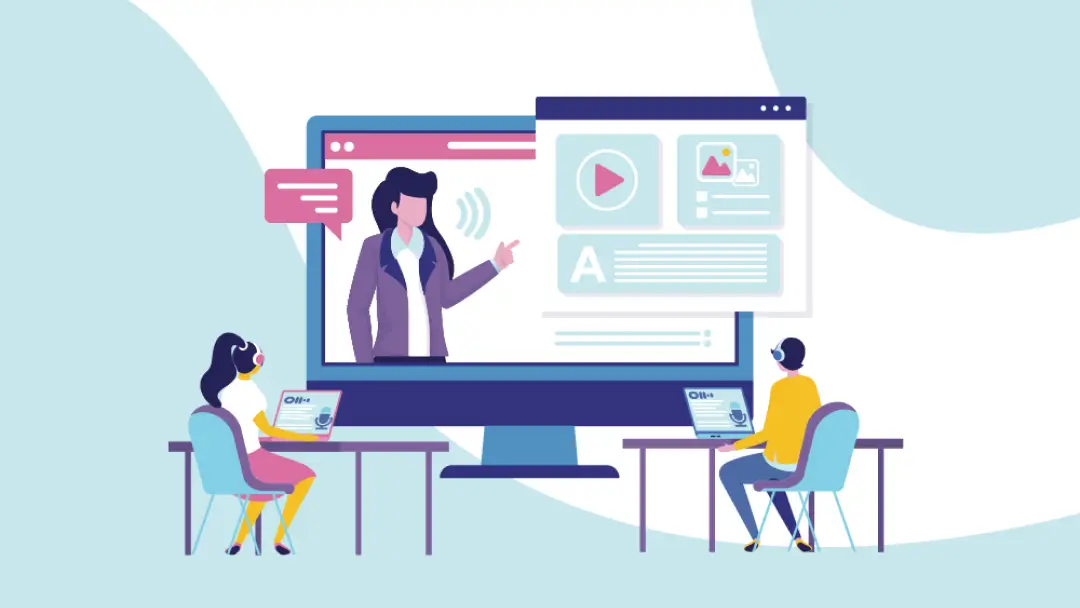Distance Learning Statistics and Growth of Online Education in 2021

The distance learning statistics below signaled the massive growth of the distance learning market, the challenges of remote education, and the future of the e-learning industry.
The growth of online education has offered distance-learning students flexibility, easy access, and instruction at a lower cost.
If local universities or schools don’t offer a particular degree or course, distance learning allows students to enroll in an institution that does. Remote instruction offers students global access to resources and studies that they wouldn’t otherwise have. For students who are part-time workers, the relatively relaxed routine of remote learning works better than a restrictive classroom schedule. It’s beneficial for students who live in remote areas or disabled individuals who can’t commute for in-person learning.
However, distance learning has its fair share of disadvantages. Students and teachers alike seem to find classroom learning much easier than remote instruction. Distance learning includes the use of online tools, software, and video teleconferencing. If a teacher experiences connectivity issues or students don’t have Wi-Fi, the disruptions will interfere with the completion of coursework. Many students also find that the distractions of a remote learning environment make it difficult to focus on studies.
Below you will find some statistics about distance learning to help you understand the matter in all its complexity. Let’s dive in!
Distance Learning Statistics In 2021
Since the onset of the global pandemic, distance learning has become the new norm. Although the COVID-19 social distancing protocols are coming to an end, 60% of institutions still want to continue with distance learning. Distance learning provides students with numerous benefits, but it also has certain drawbacks. We have gathered various data from many surveys about the unique challenges brought to distance learning. Here’s what we found out:
- Students engaged in distance learning perform relatively better than those learning in in-person classrooms.
- Since distance learning platforms are easily accessible, the participation on MOOC (Massive Open Online Courses) grew by 60 million learners.
- Online learning has also increased income in 42% of US-based organizations.

Online Education Statistics: A Case For Better Remote Learning Tools
The Covid-19 pandemic has unveiled the importance of establishing proper channels of remote learning. While distance learning was primarily used by students who lived in remote areas or couldn’t access in-person classrooms, it’s now necessary for anyone enrolled in an academic institution.
The following statistics will help you understand the areas in which distance learning tools need improvement:

Accessibility In Distance Learning – Statistics
Students living in financially strapped households may not have the means to access digital learning tools and resources. The purpose of public education is to provide every student with an equitable footing. However, the shift to remote learning has meant that many students cannot access the technology they need to be part of a digital classroom.
These statistics explain the need for accessibility across primary, middle, and higher education institutions:
- 76% of higher education institutions believe that online learning tools and platforms should be made more accessible for students.
- 69% of university and college presidents believe that ensuring student access after moving classes online is a challenge.
- 49% of current undergraduate students reported that their household’s financial situation has worsened due to the Covid-19 pandemic.
- At least one-third of all the school children in the world can’t access distance learning resources after school closures.
- 85.8% of households with annual incomes over $100,000 reported their children using online distance learning resources.
- In comparison, only 65.8% of households with annual incomes under $50,000 reported their children using online distance learning resources.
Statistics are from Otter.ai, EducationData.org, UNICEF, and The United States Census Bureau.
The Cost Of Distance Learning – Statistics
Corporations and educational institutes that rely on distance learning find that they cut costs substantially. Most online learning degrees are also cheaper than in-person learning since students don’t have to commute to class. Many universities also offer cheaper remote instruction since students enrolled in these programs don’t need on-campus resources.
These statistics will help you understand the cost of distance learning:
- As of June 2020, institutions offering bachelor’s degrees saw a 6 to 8% decline in enrollments for Fall 2020. This could be because both new and returning students believe that online tuition should be less expensive than classroom learning.
- The oil giant Shell cut training costs by 90% using e-learning, thereby saving over $200 million on some of its most expensive programs
- Institutions can save over $66 per credit hour by switching to e-learning, thereby saving them up to 50% of the average credit hour cost
- 86% of remote learners felt that the value their degree added equaled or exceeded the fees they paid for it
- IBM saved $200 million or 30% of its total training budget by switching to e-learning
- Large organizations find that over half (60%) of their total training budget comprises traveling costs
Statistics are from e-student.org and EducationData.org.
The Future Of Distance Learning – Statistics
While distance learning has been a significant part of the world for years, the Covid-19 pandemic highlighted the urgent need for educational institutions to offer accessible remote instruction.
The following statistics highlight how and why the distance learning market is projected to grow in the future:
- By 2025, the online education market is projected to be worth around $325 billion
- The total value of AI in the education market will grow to $6 billion by 2024
- It’s not just academic institutions that rely on online learning—over 40% of Fortune 500 companies use it to train their staff
- Britain’s largest online university, The Open University, provided conclusive evidence that online learning courses lead to 85% lesser carbon dioxide emissions per student and consume 90% less energy than in-classroom education
Statistics are from SkillScouter and TechJury.
In closing
Before the onset of the Covid-19 pandemic, live instruction was the primary method through which students obtained their education. The shift to remote learning in 2020 is an example of emergency distance education, with faculty and students unable to utilize on-campus premises and resources to prevent the spread of Covid-19.
But the distance learning statistics gathered here truly showcase the importance of learning online - during the coronavirus crisis and beyond.
Read next: How Otter.ai is helping students and teachers transition to distance learning

















.png)


